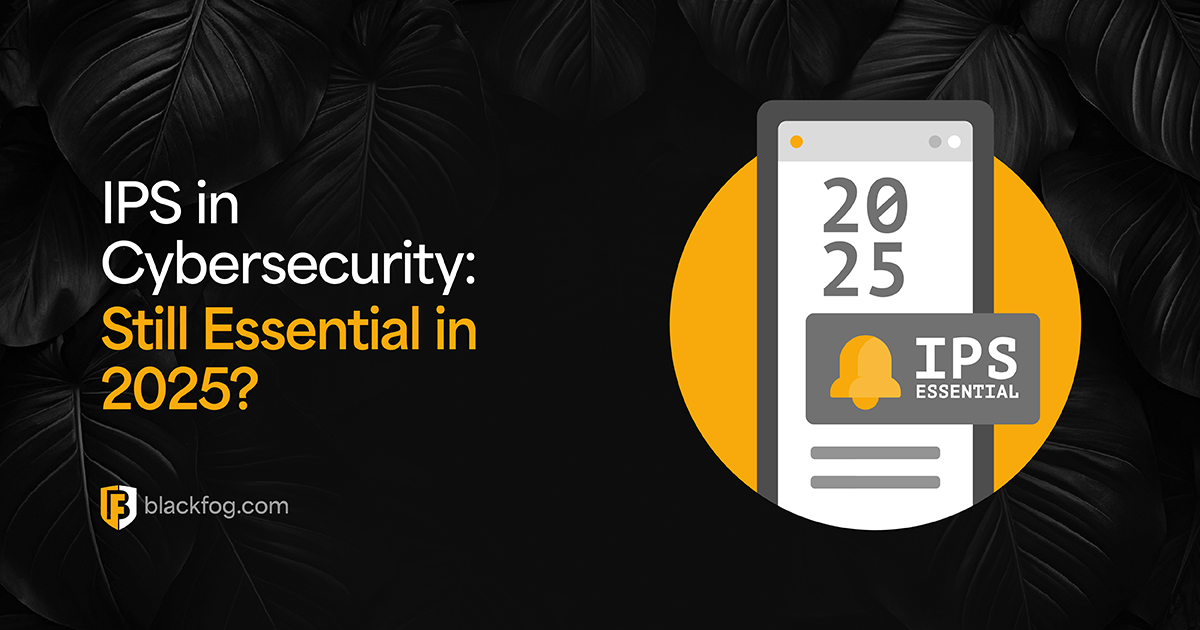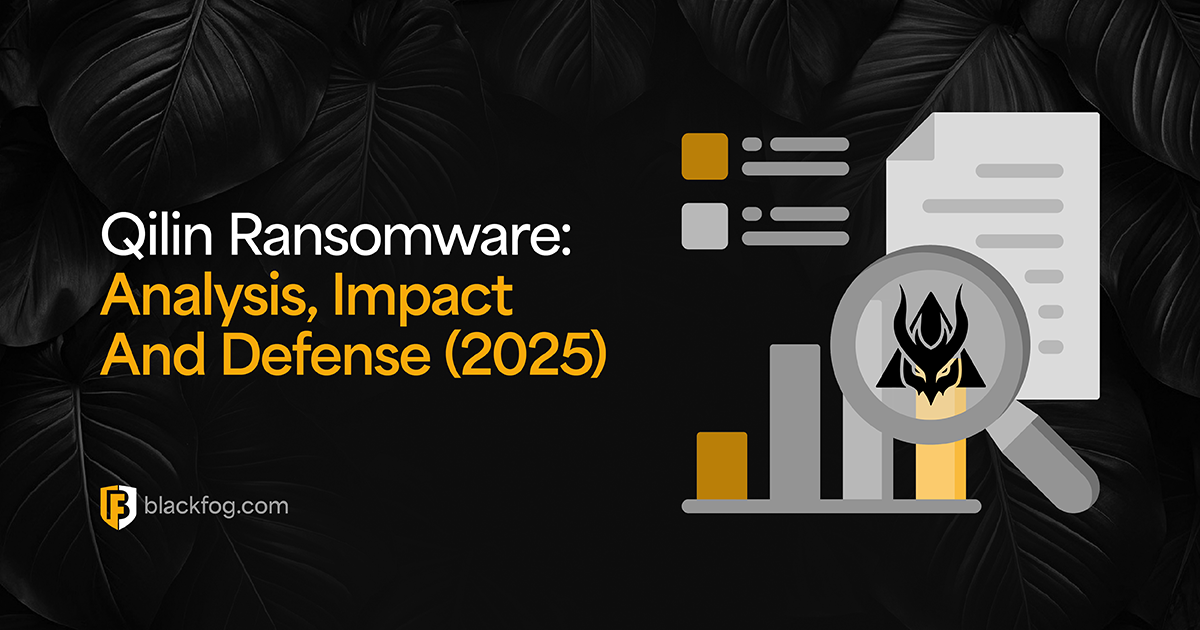
IPS Tools in Cybersecurity: Still Essential in 2025?
Cybersecurity threats are no longer limited to basic malware or isolated breaches. In 2025, attackers will use a wide variety of tactics, including using automation, obfuscation and artificial intelligence, in order to bypass traditional defenses and exfiltrate data in real-time. As a result, businesses need more proactive, adaptable protection across their networks to defend against new threats and minimize key risks such as data exfiltration.
While technologies like AI and machine learning in cybersecurity offer advanced detection, prevention remains a critical line of defense. This is where Intrusion Prevention Systems (IPS) come in. These are designed to detect and block suspicious traffic before it causes damage. As such, IPS cybersecurity solutions still have a vital role to play in safeguarding networks in an increasingly automated threat landscape.
What Is IPS in Cybersecurity?

An IPS is a network security tool that monitors traffic in real-time and actively blocks threats before they reach their target. Unlike detection-only tools, IPS takes immediate action to prevent attacks such as ransomware, phishing or exploit attempts from compromising systems.
The technology works by inspecting data packets as they pass through the network and comparing them against known threat signatures or behavioral patterns. An IPS sits between external and internal networks, allowing it to intercept malicious activity and enforce security policies as threats emerge.
This is particularly important in an age where fast detection can be the key to minimizing the damage caused by cyberattacks. According to IBM, for instance, adopting tools like AI and automated threat response solutions can reduce the cost of a major data breach by as much as $2.2 million.
How IPS Works: Detection and Response in Real-Time
IPS tools operate by actively monitoring network traffic in real-time to identify and block suspicious activity before it can compromise internal systems. Positioned inline at key network entry points, IPS tools inspect data packets as they flow through the network, analyzing them for known attack signatures, abnormal behaviors, or violations of defined security policies.
Unlike traditional perimeter tools like firewalls, which primarily control access based on predefined rules, IPS is capable of deep packet inspection. This means it can assess the context and content of network traffic, not just its origin or destination. What’s more, if an IPS does detect something malicious, it can automatically drop the traffic, reset the connection, or quarantine affected systems.
The key advantage of IPS lies in its proactive capabilities. Rather than relying solely on static rules or manual reviews, machine learning capabilities allow it to act immediately to neutralize threats in progress. Because there is no need for review by a human operator, this significantly reduces response time and limits potential damage.
How IPS Differs From Other Essential Cybersecurity Technologies
IPS is a powerful line of defense, but it’s most effective when deployed as part of a broader cybersecurity strategy. It plays a distinct role alongside other key technologies, each designed to address different stages of the threat lifecycle. Here’s how it compares to other key pillars of a comprehensive cybersecurity strategy.
- IDS (Intrusion Detection System): Like IPS, this monitors network traffic and alerts security teams to suspicious activity, but it does not take action to block threats.
- SIEM (Security Information and Event Management): Aggregates and analyzes logs from across systems to provide centralized visibility, threat correlation and alerting, but again does not prevent attacks directly.
- EDR (Endpoint Detection and Response): This focuses specifically on detecting, investigating and responding to threats at endpoint devices, typically after they have bypassed perimeter defenses.
- ADX (Anti Data Exfiltration): At the other end of the line of defenses, this protects sensitive data from being exfiltrated by unauthorized users or malicious insiders after a breach has occurred, by identifying and blocking suspicious outbound transfers.
While each of these tools serves a specific purpose, they are most effective when used together as part of a layered defense strategy. IPS provides real-time protection at the network level, while tools like SIEM and EDR deliver broader visibility, contextual insight and endpoint control. ADX, meanwhile, steps in as a backstop if other methods have failed, by preventing the final theft of data. Together, they create a more resilient and responsive cybersecurity framework.
Common Use Cases for IPS in Business Cybersecurity
IPS plays a vital role in defending networks against fast-moving and increasingly automated threats. Its ability to block malicious activity in real-time makes it particularly valuable in high-risk environments and industries that demand both speed and precision in threat response. Key use cases include:
- Stopping malware and exploit attempts: A primary aim of the technology, IPS can detect and block traffic carrying known malware or exploit code before it reaches endpoints or servers.
- Mitigating brute force and DDoS attacks: By identifying and shutting down high-volume or repetitive access attempts, IPS helps prevent service disruption and unauthorized access.
- Protecting vulnerable systems: These tools are ideal for shielding legacy infrastructure or unpatched devices that cannot be updated easily.
- Enforcing compliance and access policies: The technology helps uphold regulatory and security standards by blocking traffic that violates internal data handling rules set by security or compliance teams.
- Supporting remote work environments: IPS adds an extra layer of protection for businesses managing distributed or cloud-connected systems.
Challenges and Considerations When Using IPS
While IPS offers strong real-time protection, it must be deployed thoughtfully to avoid disruption or inefficiencies. There are a range of challenges involved in the implementation of these tools that must be considered and addressed for a successful deployment. Key issues to bear in mind include:
- False positives blocking legitimate traffic: Careful tuning and regular rule reviews are important in minimizing unnecessary interruptions to business operations.
- Resource demands and latency risks: Ensure infrastructure can support IPS processing requirements without slowing down network performance.
- Complex integration with other tools: Plan early for compatibility with firewalls, SIEM and endpoint solutions to avoid configuration issues.
- Maintenance and rule updates: Keep threat signatures and behavioral rules up to date to maintain effectiveness against emerging threats.
- Limited visibility beyond the network edge: Combine IPS with endpoint and behavioral analytics tools for full-spectrum coverage.
The Role of IPS in a Layered Cybersecurity Strategy in 2025
In 2025’s evolving threat landscape, IPS remains a critical component of a layered cybersecurity strategy. As attackers adopt faster, more evasive techniques, increasingly powered by automation and AI, businesses need equally proactive tools that can detect and block threats quickly. IPS offers this frontline protection, especially when enhanced with machine learning to reduce false positives and adapt to emerging patterns.
However, no preventive system is foolproof. With breaches increasingly seen as inevitable, organizations must also focus on how quickly they can identify, contain and respond to threats once they’re inside the network. This means combining IPS with other tools that provide continuous monitoring, behavioral analytics, wireless protection and anti data exfiltration to reduce the risk of breaches and protect sensitive information.
By integrating IPS with broader detection and response capabilities, firms can improve resilience and ensure their defenses are ready for today’s complex attack environment.
Share This Story, Choose Your Platform!
Related Posts
New Matrix Push C2 Abuses Push Notifications to Deliver Malware
Investigating Matrix Push C2, a browser based command and control system that uses push notifications to deliver malware, run phishing campaigns, and steal data across platforms.
Clop’s New Extortion Wave Hits Oracle E-Business Suite
Clop exploited an Oracle E-Business Suite zero-day to steal data from major organizations. Here’s how it happened and what it means for supply-chain security.
Qilin Ransomware: Analysis, Impact and Defense (2025)
In-depth 2025 Qilin ransomware analysis covering its rise, attack chain, intimidation tactics, double extortion model, and defense strategies.
Kerberoasting Attack Explained: Example And Prevention Guide
Kerberoasting attack explained with examples, detection tips, and prevention steps. Learn how to secure Active Directory from credential theft.
BlackFog Appoints Former Yahoo CFO Kenneth A. Goldman To Board Of Advisors
Kenneth A. Goldman joins BlackFog’s Board of Advisors, bringing decades of tech and finance leadership to accelerate enterprise growth and AI-based data protection.
Why Every Business Needs A Cybersecurity Roadmap
Find out what's involved in creating a cybersecurity roadmap and how having one can help navigate an extremely challenging threat landscape.






